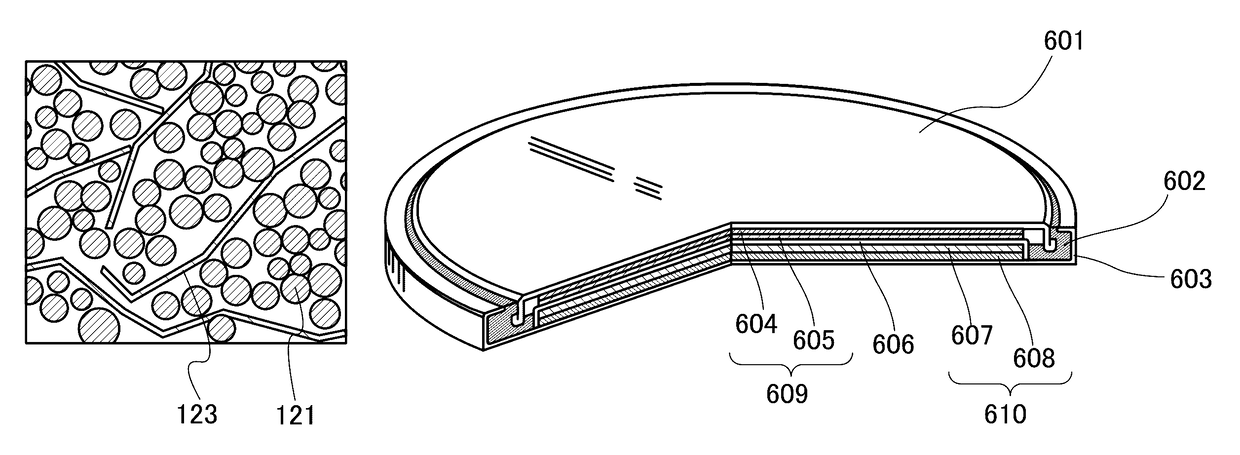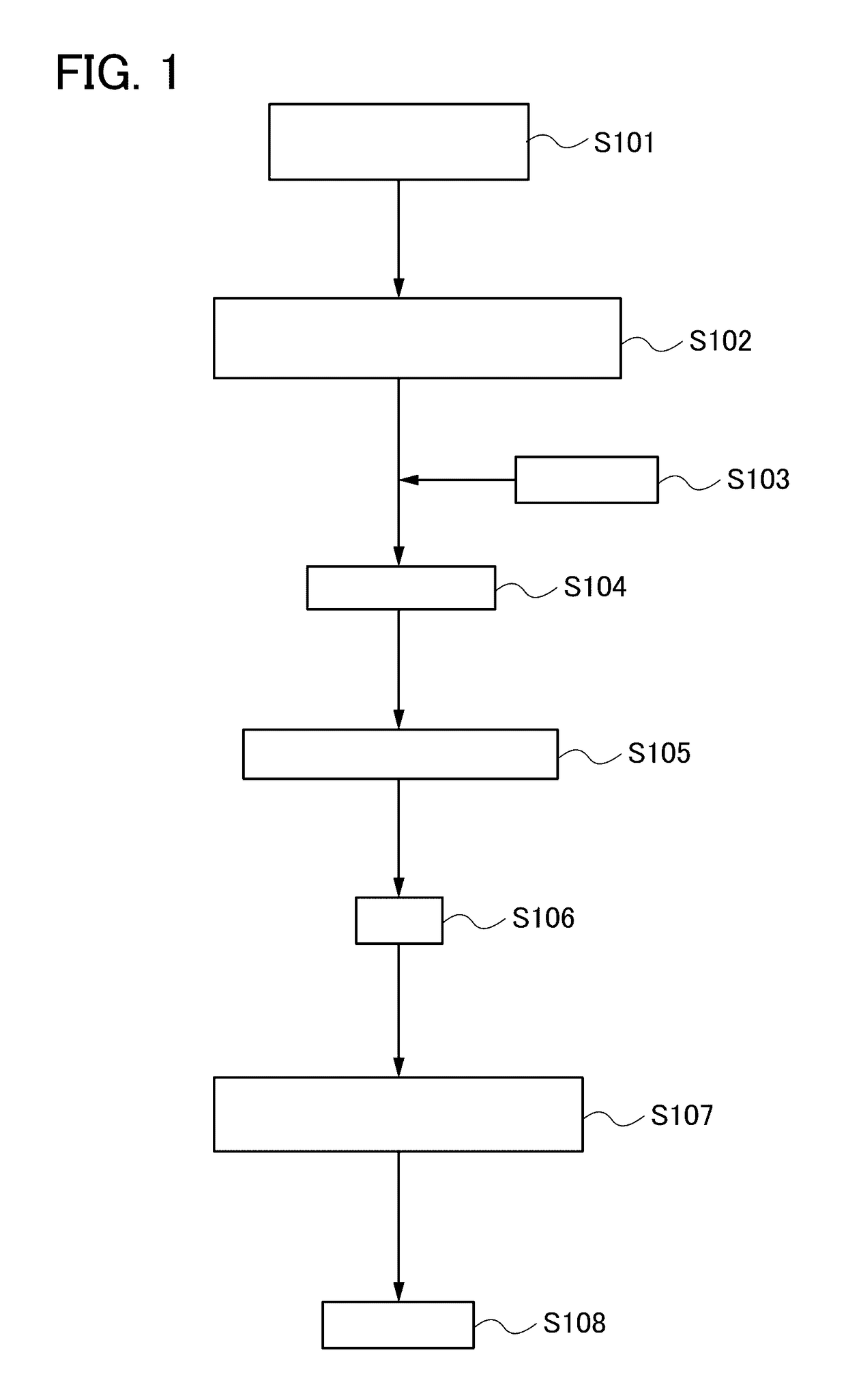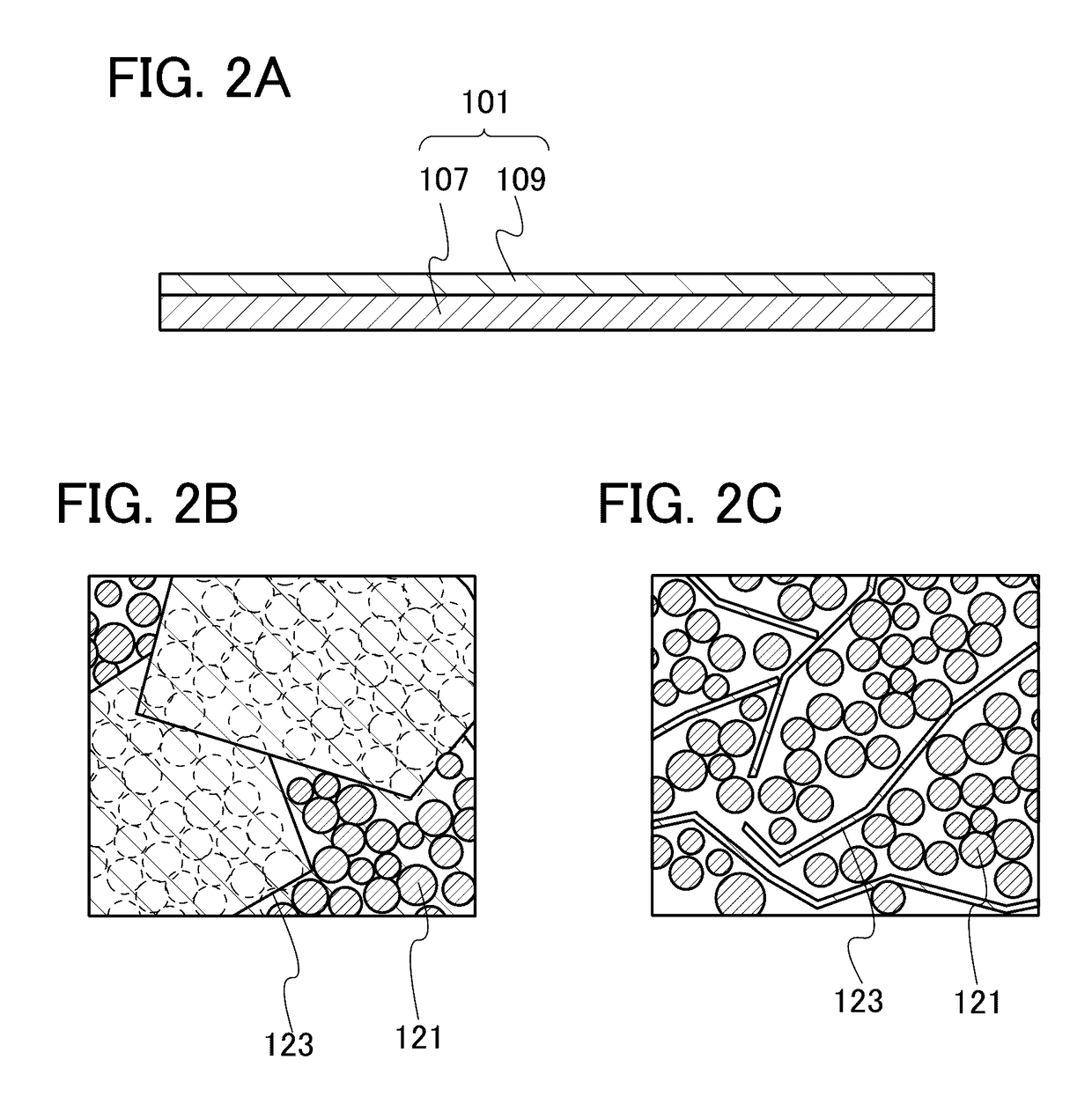Method for forming negative electrode and method for manufacturing lithium secondary battery
a negative electrode and secondary battery technology, applied in the direction of cell components, final product manufacturing, sustainable manufacturing/processing, etc., can solve the problems of negative electrode deterioration and decomposition of binding elements, and achieve good electric characteristics
- Summary
- Abstract
- Description
- Claims
- Application Information
AI Technical Summary
Benefits of technology
Problems solved by technology
Method used
Image
Examples
embodiment 1
[0052]In this embodiment, first, a negative electrode of a lithium secondary battery and a method for forming the negative electrode are described with reference to FIG. 1.
[0053]First, a method for forming graphene oxide is described. For example, graphene oxide can be formed by a method for forming a dispersion containing graphite oxide by mixing a sulfuric acid solution of potassium permanganate, hydrogen peroxide water, or the like into single crystal graphite powder to cause oxidation reaction. The graphite oxide has functional groups such as an epoxy group, a carbonyl group, a carboxyl group, and a hydroxyl group due to oxidation of carbon in graphite.
[0054]Since the graphite oxide has such functional groups, the interlayer distance between adjacent graphenes of a plurality of graphenes is longer than the interlayer distance in graphite.
[0055]Next, ultrasonic vibration is applied to the dispersion containing the graphite oxide, so that the graphite oxide whose interlayer distan...
embodiment 2
[0095]In this embodiment, one mode of a structure of a lithium secondary battery and a method for manufacturing the lithium secondary battery are described below.
[0096]FIG. 4A is an external view of a coin-type (single-layer and flat) lithium secondary battery, and FIG. 4B is a cross-sectional view thereof.
[0097]In a coin-type lithium secondary battery 600, a positive electrode can 603 serving also as a positive electrode terminal and a negative electrode can 601 serving also as a negative electrode terminal are insulated and sealed with a gasket 602 formed of polypropylene or the like. A positive electrode 610 includes a positive electrode current collector 608 and a positive electrode active material layer 607 provided in contact therewith. On the other hand, a negative electrode 609 includes a negative electrode current collector 604 and a negative electrode active material layer 605 provided in contact therewith. A separator 606 and a non-aqueous electrolyte solution (not illust...
embodiment 3
[0124]A lithium secondary battery of one embodiment of the present invention can be used for power sources of a variety of electrical appliances.
[0125]Specific examples of electrical appliances using the lithium secondary battery of one embodiment of the present invention are as follows: display devices of televisions, monitors, and the like, lighting devices, desktop personal computers and laptop personal computers, word processors, image reproduction devices which reproduce still images and moving images stored in recording media such as digital versatile discs (DVDs), portable CD players, portable radios, tape recorders, headphone stereos, stereos, table clocks, wall clocks, cordless phone handsets, transceivers, portable wireless devices, cellular phones, car phones, portable game consoles, calculators, portable information terminals, electronic notebooks, e-book readers, electronic translators, audio input devices, video cameras, digital still cameras, electric shavers, high-fr...
PUM
| Property | Measurement | Unit |
|---|---|---|
| temperature | aaaaa | aaaaa |
| temperature | aaaaa | aaaaa |
| electrical conductivity | aaaaa | aaaaa |
Abstract
Description
Claims
Application Information
 Login to View More
Login to View More - R&D
- Intellectual Property
- Life Sciences
- Materials
- Tech Scout
- Unparalleled Data Quality
- Higher Quality Content
- 60% Fewer Hallucinations
Browse by: Latest US Patents, China's latest patents, Technical Efficacy Thesaurus, Application Domain, Technology Topic, Popular Technical Reports.
© 2025 PatSnap. All rights reserved.Legal|Privacy policy|Modern Slavery Act Transparency Statement|Sitemap|About US| Contact US: help@patsnap.com



